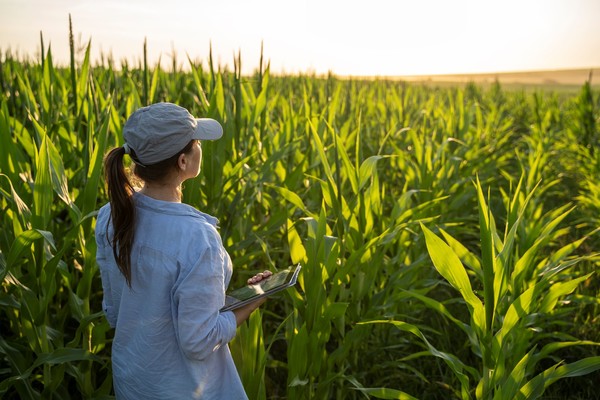
Women in agriculture, gender gap still to close
Focus Istat on women employed in agriculture in the Italian primary sector (7th census data). They make up 30% of the total workforce with 31% running farms, for a gender gap that is smaller than in other sectors but still high. Little inclination to use new generation technologies
The latest survey on the situation of agriculture in Italy, conducted by the national institute of statistics and referring to 2020, found that the number of farms surveyed (1.33 mln) had 2.8 mln employees, with women accounting for 30%.
823,000 women are employed in our primary industries, a lower number than in the last census in 2010, when they stood at 36.8%, but with a commitment in terms of work days that has grown by 30% (+13.9% for men), especially among the family labour force.
The number of women involved in company management is on the rise, with a growth from 25.8% to 31.5% over the last twenty years, with a higher average than that of the European Union estimated at 28.6%. In a comparison with other Italian sectors, according to Unioncamere, in 2021 in companies less than 1 director out of 4 is a woman: in agriculture almost 1 out of 3.
As regards the geographical location of this figure, female-led companies are mainly concentrated in the central south with averages between 35 and 41% in Calabria, Basilicata, Molise, Campania and Abruzzo; between 30 and 35% in Sicily, Apulia, Latium, Tuscany and Liguria and 20 and 30% in the other regions. The highest figure is recorded in Molise (40%) and the lowest in Bolzano and Trento (15%).
Farms led by women are on average smaller with a UAA of 7.7 ha compared to the 12 ha of those led by men, with greater differences in northern Italy where holdings are larger. The survey points out that in 2000 half of the farms run by women had less than one hectare while in 2020 they are one in five; on the male side in the same period they went from one in three to one in five.
Women are more present in holdings that practice only cultivation rather than cultivation plus animal husbandry, and in those with other remunerative activities such as agrotourism and educational farm management, where the percentages are 35 and 40.8% respectively.
In terms of age, women's managerial responsibility in agriculture is more widespread in the older age groups (+65 years) when, according to analysts, 'the commitment expected from the managerial role becomes more reconcilable with that carried out within the household'. A datum also shared in the EU sphere. In Italy, the lowest percentages are recorded in the 35-39 age group and under 25. It is interesting to note that, with higher numbers, the percentage phenomenon is also confirmed in male-run companies.
On the education front, among the various educational qualifications, women heads have higher percentages under the headings of diplomas and general degrees while men have higher percentages under the headings of agricultural degrees in all levels. Higher percentages for women also under the headings of having only a primary school degree or no degree at all.
The survey also reveals that farms led by women have a lower propensity to innovation and computerisation than those led by men: 20% versus 80, and 23% versus 77% respectively. Only one in five of Italian farms that innovate or are computerised is female-led.
In conclusion, commentators point out that the census has confirmed that the Italian agricultural sector has a smaller gender gap than other sectors, but that there is still much to be done to overcome a disparity that is still high.
Confidence in better prospects thanks to measures such as those in Italy that have provided for simplifications in facilitative interventions in favour of female entrepreneurship; and to European guidelines that see in the new CAP an invitation to member states 'to place particular emphasis on the participation and promotion of the role of women in agriculture'.








